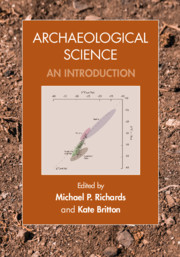

This is a noble, if possibly premature, attempt to apply the theoretical underpinnings of philosophical and cognitive science to the gut understanding of craftsmen that their craft involves an active interrelationship between their brains, their bodies, and their materials.this book is strongly recommended to cognitive scientists, philosophers, and cognitive anthropologists/archaeologists.

How Things Shape the Mind is an important book. Not since Human Evolution, Language, and Mind: A Psychological and Archaeological Inquiry (Noble and Davidson 1996) has an authored book taken a significant critical view of the epistemology grounding cognitive archaeology. Its challenge will not be easy to meet-our Cartesian view of mind is just so very comfortable-but it may well provide a means for making true progress in the archaeology of mind. This book has a coherent structure, a lucid narrative and an interesting though risky theoretical argument. These elements serve to captivate the reader with provocative questions and suggestive answers.

This is an informed and readable treatise detailing how material culture engages with humanity in a unique way, especially because of its physicality. Part psychology, part philosophy, and a good, heavy dose of archaeology, this is a challenging book, and Malafouris clearly intends it to be so. For those wishing to ponder this considerable challenge, Malafouris's book will be a great place to start.Īs Malafouris has so wonderfully explicated throughout his book, 'The mind is more than a brain,' (p. 227), and I am now forever transfixed upon the much grander meaning of kites and the people who fly them. How Things Shape the Mind is a rich, thought-provoking and ambitious book. hat this book is a main contribution to cognitive archaeology and to the wider debate on how material culture and technology, on the one hand, and human thought, on the other, are causally intertwined.

In this beautifully written and cogently argued book, Lambros Malafouris draws on recent developments in cognitive science and philosophy of mind to construct Material Engagement Theory (MET), a framework that sees action as a form of cognition.Īnyone who is seriously interested in either or both of these fields should read this fascinating book. He shows how this theory has surprising implications not just for cognitive archaeology, but for the rest of cognitive science as well. Professor of Cognitive Science, University of California, San Diego This is a 'must read' book for everyone who is interested in how the particularly human way of thinking came into existence.


 0 kommentar(er)
0 kommentar(er)
